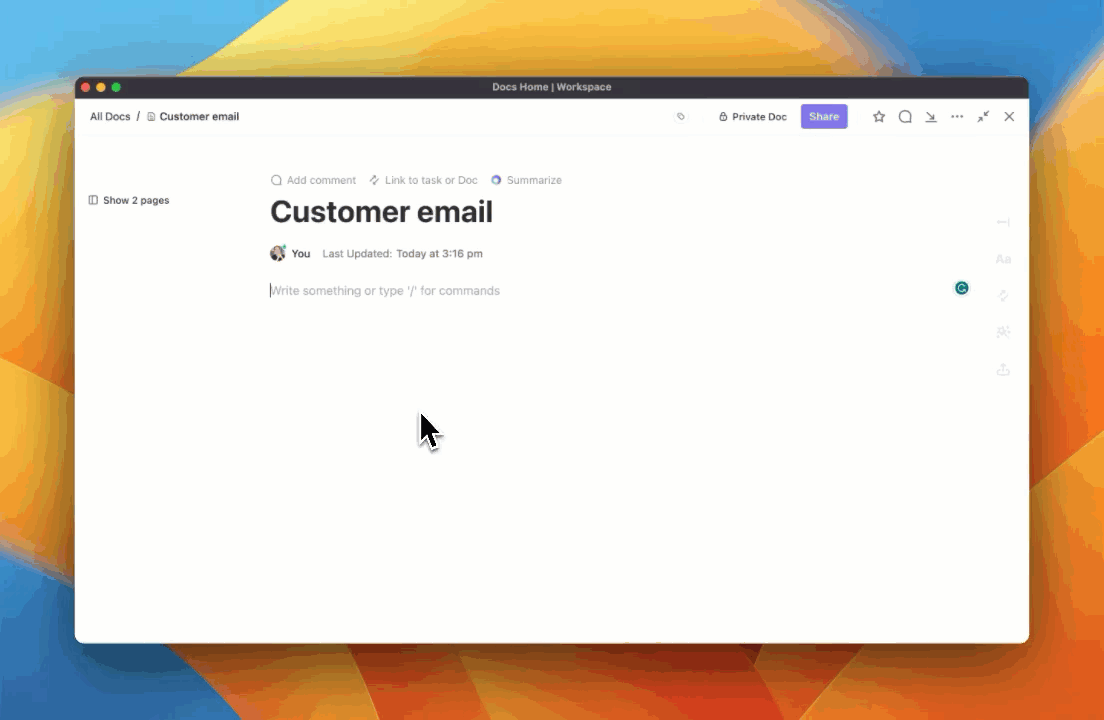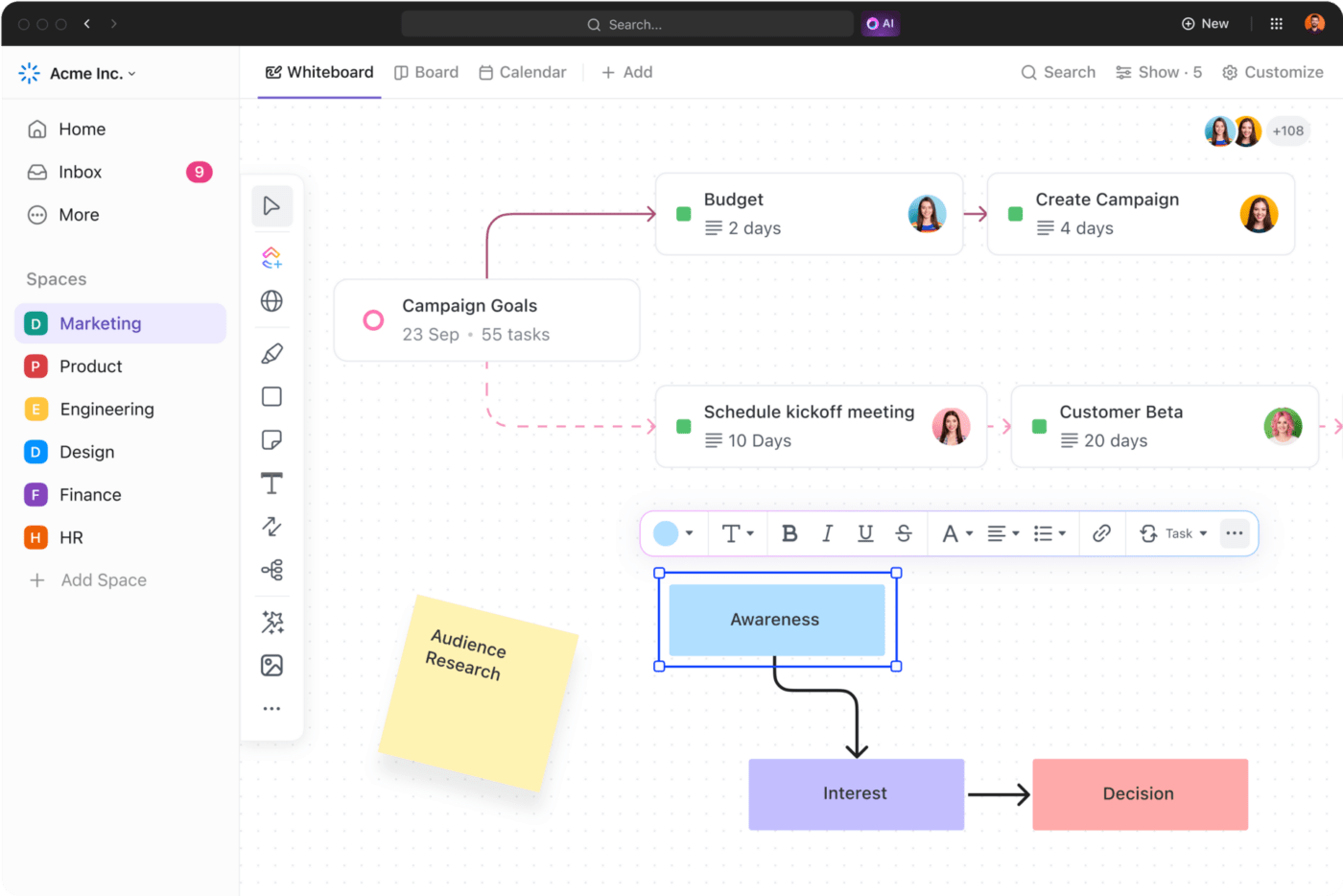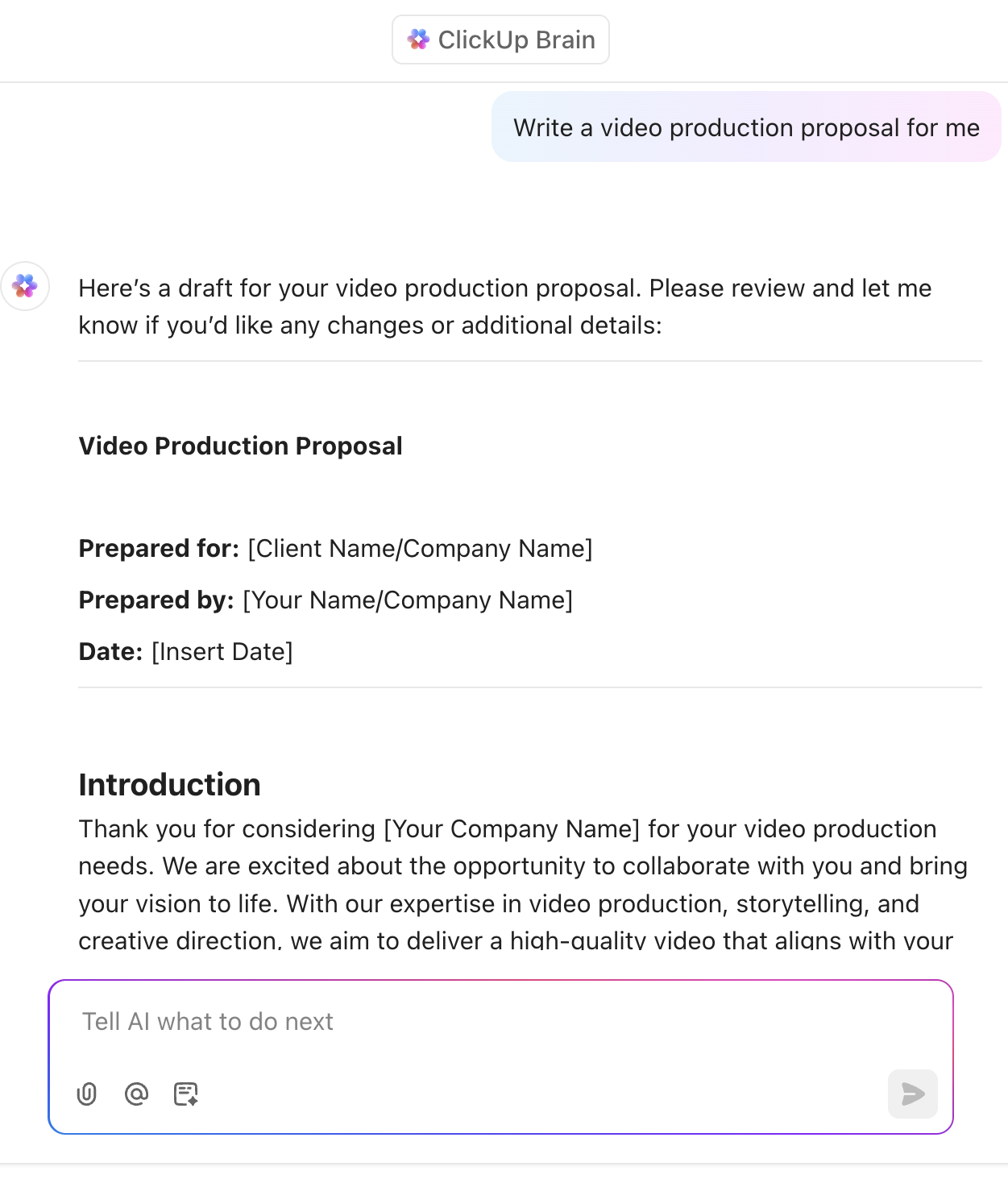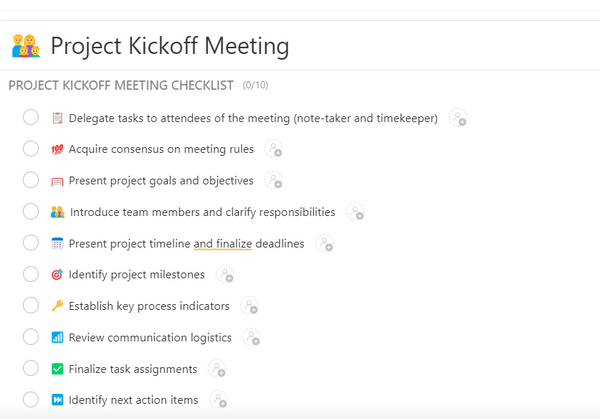Pitching client presentations can be a daunting experience.
You have to convince clients that you’d be a good fit for their brand and have the best solution to their problem. That your product or service can help them achieve their goals.
With multiple elements in the mix, driving engaging and relevant presentations becomes challenging.
Learn how to deliver a successful client presentation using the strategies in this guide.
The Importance of a Client Presentation
A client presentation is meant to give prospective clients a good idea of your specialized expertise. It helps them see what working with you might be like and how you can add value to them.
If planned and delivered well, an informative customer presentation can help you:
- Talk about your work in the format of a compelling story
- Articulate your value to potential clients
- Communicate the progress you’ve made to an existing client
- Wrap up projects and dissect what went well and what didn’t
Effective client communication is one of the most critical skills for a sales or business professional today.
5 Essential Steps for a Successful Client Presentation
Creating engaging client presentations is tough work, whether you’re about to deliver a sales pitch or a creative slideshow.
Use this five-step checklist when creating presentations and add value to your client’s time:
Step 1. Research and plan the pitch
You may understand your work inside out, but your potential client has yet to warm up to partnering with you.
This is why the most essential part of an effective client presentation starts with research and planning.
Look into:
- Who your target audience is (for the presentation) and what their goals look like
- Everything about your prospective client, including their problems, inspirations, interests, and more
- How to answer your client’s biggest goals, roadblocks, and issues
- Their business, team size, and industry (and how your product/services will support their vision)
Now the question is, where do you find this data?
Make sure to look up the following:
- The client’s LinkedIn page and website for information on their current offerings
- Your past pitches for inspiration—especially if you’ve catered to clients in the same industry
- The client’s ‘About Us’ page and videos online for a better understanding of your presentation’s ideal tone of voice and topics
Once you have all the information about what makes your clients tick, help them make sense of the data—structure and format the key points you plan to deliver using ClickUp Brain.
Utilize this smart assistant to generate a presentation to help you reach your prospective client goals faster.

Next, you’ll want to use the client meeting to talk about why your brand is right for them:
- Start by acknowledging their pain points, showing them that you understand them, and building trust in the process
- Move on to asking questions and see if they have any pressing issues that need to be solved
- Introduce your offering as the ultimate solution to your client’s problems and tie your product to their immediate needs
Step 2. Create a marketing funnel out of your presentation
Your presentation needs a tangible end goal to ensure focus and direction. Do you want the client to sign the contract? Or maybe you want them to register for a demo.
Either way, you must clearly know what action you’d like to inspire them to take.
Here are a few tips on how to convert your presentation into a marketing funnel:
- Build your narrative using a compelling story to hook the audience
- Don’t overload the prospect with tons of information
- Ensure your presentation is to the point, and avoid beating around the bush
- Take charge of your meeting and get your clients to focus on the conversation at hand
- Design your slide deck with a proper:
- Beginning: Introduce what is being presented, why you’re presenting, and what the client should expect when working together
- Middle: Add visuals to your story and create aesthetic value
- End: Tell the customer about the next steps and add a relevant call to action
Use the premade ClickUp Presentation template and customize it according to your liking.
This template enables you to:
- Organize sections of your presentation easily, with a clear structure from beginning to end
- Gather feedback from key stakeholders before the final presentation
- Keep track of all tasks related to the presentation in one place
Step 3. Use visually engaging content to communicate your story
Too much text on your slides makes them dull and will overwhelm your audience.
So, when presenting, consider visual aids like infographics, pie charts, bar graphs, images, hand-drawn illustrations, etc., as your trusted friend.
These visuals offer advantages such as:
- Catching and keeping your client’s attention
- Aligning the client’s needs to the brand’s product/service—visually
- Breaking up text-heavy slides for better focus
- Converting complex information into easy-to-digest data
Use ClickUp Whiteboards as a canvas to create a visual presentation for your meeting and show your clients your value.

Step 4. Encourage two-way conversations
Whether it’s a sales pitch or an onboarding meeting, it is necessary to keep your audience engaged. In other words, your presentation cannot be a monologue.
So, when the presentation is done, it is vital to encourage two-way interaction.
Here’s how you can do this:
- Avoid small talk and instead iterate why the client’s account is important to you
- Gather feedback by asking questions such as:
- Do you have any questions for us?
- Do you see our product/service as a satisfactory solution for your needs?
- How do we work together as partners and move this project forward?
- Motivate your audience to ask questions and provide support for their queries—whether it’s related to scope, costs, timelines, and so on
Step 5. Establish clear next steps to close your presentation
Effective client management is about establishing clear next steps at the end of the meeting.
If you leave the meeting open-ended, you might not hear back from your audience.
Here’s how to set the right expectations for your client while closing the presentation:
- Outline what you want them to do next
- Be upfront and direct about how and when you’ll be making follow-up calls
- Give the client a defined deadline and keep them in the loop always
Key Elements to Include in a Client Presentation
Brush up your client presentation skills and set your presentation up for success with these must-have elements:
1. Detailed client research
Use primary and secondary research methods to gather information about your client’s pain points.
Get answers to these questions during your research:
- What are the client’s short-term and long-term goals?
- What problems are they currently facing within their industry?
- How does the client measure success?
Pro tip: Leverage sources like company websites, annual reports, industry publications, and social media platforms to get granular details.
Invest in client onboarding software to efficiently organize and present your research.
2. Client pain points
Addressing your client’s current challenges demonstrates your understanding of their immediate needs and, by extension, establishes your relevance.
Do your homework about your client’s recent activities to identify current challenges they might be grappling with. Also, engage in discussions with your key stakeholders to get their opinions. In addition, you can use project kickoff templates to capture information about your clients from the get-go.
3. Proof points
Your proof points validate your claims and build credibility by highlighting your track record and success stories. To showcase them:
- Gather case studies, testimonials, and performance data that demonstrate the effectiveness of your solutions within the industry
- Structure your presentation to strategically incorporate these proof points, highlighting them at key moments to reinforce credibility
- Use visuals, such as charts or graphs, to represent your proof points and make them more impactful
4. Call to action
A clear call to action directs your client to the next steps they should take after the presentation and guides them toward a decision.
To make this process easier for them:
- Clearly outline the desired outcome, whether it’s scheduling a meeting, signing a contract, or starting a trial
- Provide multiple channels for the client to take the desired action and make it as convenient as possible for them to move forward
- Connect with them promptly afterward to reinforce the call to action and provide additional support as needed
5. Expected investment and timeline
Present a detailed breakdown of the investment required for your solutions, including costs, payment terms, and potential ROI.
To get an accurate estimate of your client’s budgetary and timeline requirements, ask these questions:
- What’s the maximum budget for the project?
- Are there any specific budgetary constraints to be aware of?
- How flexible is the client’s budget? Are they open to discussions about cost adjustments?
- What timeline do they have to get the project up and running?
- What will happen to the deadline and costs in case of a scope creep?
4 Common Mistakes to Avoid During a Client Presentation
Find the sweet spot with your presentation skills by avoiding these common mistakes:
1. Not setting the stage properly
Failing to establish the proper context at the beginning of your presentation leads to misunderstandings and a lack of engagement from your client. Manage client expectations and clarify what the audience should expect.
If your clients feel confused about the purpose of the presentation, they’ll never be able to grasp the value of your offerings fully.
To set the stage properly, follow these few tips:
- Understand your audience’s background and align your introduction to resonate with their needs
- Clearly state the objectives of your presentation and let your clients know what they stand to gain from your pitch
- Start with a compelling hook that captures their attention and sets the tone for the rest of the presentation
2. Getting defensive
Displaying defensive body language, such as crossing arms, avoiding eye contact, or appearing tense, signals discomfort to your clients.
This can immediately undermine your credibility and rapport with them.
Plus, your defensiveness may seem more like a lack of confidence in your customer’s eyes, leading to a breakdown in communication and trust.
To sharpen your non-verbal communication skills, follow these tips:
- Pay attention to your body language during practice sessions. Also, practice maintaining an open posture and making eye contact to convey confidence and openness
- If a challenging question is asked, remain calm and open-minded
- Demonstrate active listening by nodding, smiling, and using affirming gestures. This shows your clients that you value their input and are engaged in the conversation
- If you’re unsure about something or need clarification, ask questions politely and respectfully. This demonstrates a willingness to understand and address your client’s concerns
3. Mentioning irrelevant information
Irrelevant details during a pitch are a waste of your client’s time. If there is no clear benefit of adding additional information about the company services, don’t.
For example, if your presentation is about account management, don’t talk about your company’s history unless it directly relates to the success of your account management strategies.
Instead, focus on showcasing account results as the main takeaway. This will keep your presentation focused and ensure you’re providing valuable information that directly addresses your client’s interests and needs.
Here are some strategies to effectively incorporate relevant data within your presentation:
- Add data that directly addresses your customer’s specific pain points and interests
- Identify the most important metrics that align with your audience’s goals and tie these metrics to the impact of your solutions
- Use charts, graphs, and visuals to present data in a clear and compelling manner
- Provide context of the data you’re presenting—help your audience understand why these numbers matter and how they relate to the overall story you’re telling
- Use real-life examples and case studies to illustrate how your solutions have delivered tangible results for similar clients
4. Not guiding the feedback loop
Finishing a solid presentation is not where your work should end. Keep tabs on your audience’s needs, starting with a follow-up call.
Use a free project management software like ClickUp and arm your company with real time client feedback into what’s working for them and what isn’t. A good client management platform can also automate many of these tasks.
With ClickUp Forms you can capture your client’s responses and route work to the right team at the right time. Additionally, you can convert Clickup Form responses into trackable tasks, which can be plugged directly into your workflows

Read More: Strategies for Client Project Management
Pitch Perfectly With ClickUp
When it comes to a presentation, sticking to the basics makes sense. However, deliver the Big Idea in a way that wows your clients and wins them firmly over.
So, incorporate research and storytelling and maintain a client-first approach to make your presentation stand out.
Use presentation software like ClickUp to deliver pitch-perfect pitches!
Common FAQs
1. How can I improve an audience presentation?
Here are a few key takeaways on how to deliver a successful presentation:
- Spend time and effort researching and planning your pitch
- Convert your presentation into a well-defined marketing funnel
- Leverage visuals and images to highlight the USPs of your product or services
- Close the presentation with a two-way dialogue and clear next steps
2. What should I include in a client presentation?
You can include the following in a client presentation:
- Detailed client research
- The client’s pain points
- Strategic proof points for your presentation content
- A relevant call to action for your audience
- Essential details such as the expected investment and timelines
3. How can ClickUp help in optimizing a client presentation?
ClickUp saves you time and effort in creating effective presentations through its various tools as:
- ClickUp Presentation template, which helps you create effective and engaging presentations for your audience
- ClickUp AI, which allows you to generate a presentation outline within seconds; for example, creating a sales presentation for your sales process
- ClickUp’s Presentation Executive Summary Template, which helps you make a killer first impression with your presentation
Use these features and save the time that goes into creating presentations.







